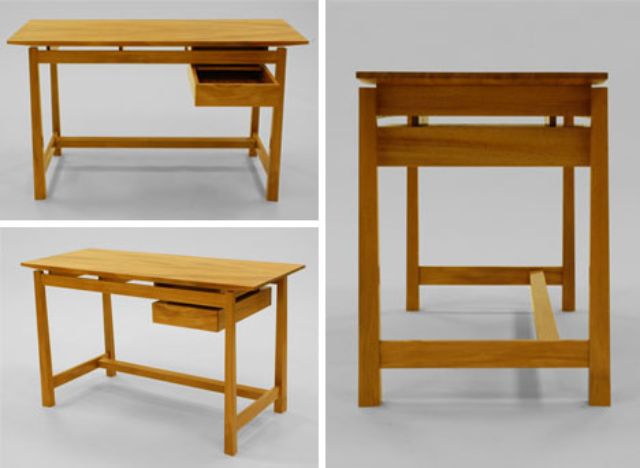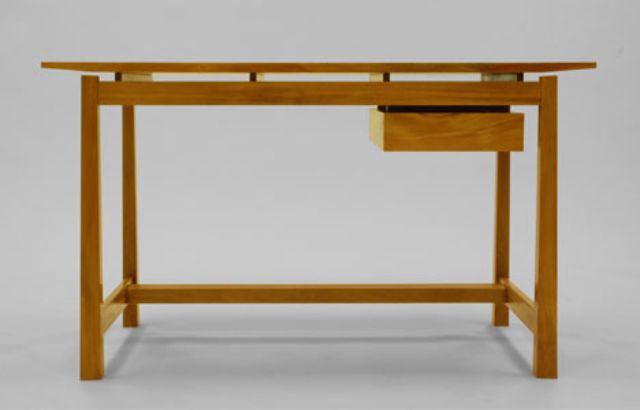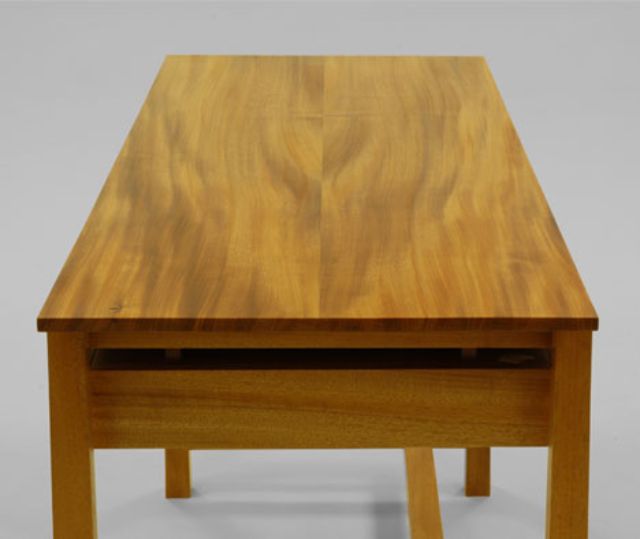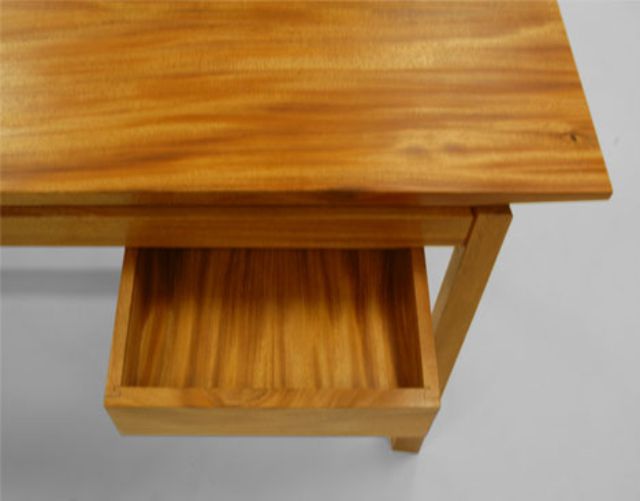Built by Dornob: A Solid Wood Desk

Regular readers know that this site mostly focuses on featuring creative, innovative and unique designs by other companies, cooperatives and individuals … but did you know its editor has a professional background and education in urban, architectural, graphic, industrial and furniture design? Kurt Kohlstedt designed and constructed this particular solid-wood desk over a summer while working on his graduate degree in architecture.

Any veteran craftspeople in the audience will recognize the unique challenging of building this particular piece: it started with a board that measured about eight feet in length, one foot in width and was only a few inches deep. From this, every last leg, drawer component, surface and structural element of the DIY desk had to be cut – the resulting scrap represented less than five percent of the total board. Is it unprecedented? Not at all – but definitely exciting and difficult.

The decision-making process was sufficiently complicated that a number of computer models were required to make sure the process was even possible, factoring in what would be lost during the cutting process. There was no room for error. Why cut it so close? Partly as a challenge, partly for the consistency of the finished piece and partly to avoid wasting any amount of such a unique and beautiful board.

Moreover, since solid wood was employed (Honduras Mahogany to be specific), certain offsets were required to accommodate seasonal contraction and expansion within wider wooden expanses. The result is the ‘floating’ effect you see above, in which the top actually does not rest on the legs themselves – instead, it sits astride horizontal supports with flexible fittings. This allows the top board to move and flex without breaking or bending. Oh, and it looks neat.

The most variegated section of the board was reserved for the main surface of the desk itself, split and rejoined to make a dynamic pattern from the ribboned wood. Interestingly, due to the reversing of the sides, they look less like mirrored images and more like the inverse of one another as you can see in the photograph. It is little learning processes like these that help give one an appreciation for materials and handmade crafts.

The best piece however, was saved for the front of the drawer – a tight knot that was physically hard to the touch by comparison to the rest of this wonderfully soft wood. It was placed in precisely the location that one would expect to grip with a thumb when opening the drawer, and facing up as a visual surprise when someone pulls it into view. So, if you ever wonder why Dornob seems so fixated on fine works of craft and design, perhaps this will help explain it: one often gains a qualitatively different understanding and ultimately deeper appreciation of a process by engaging in it directly.




